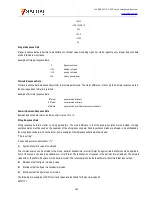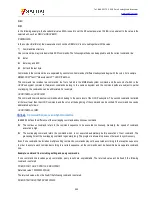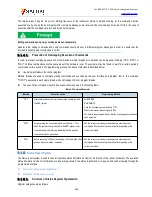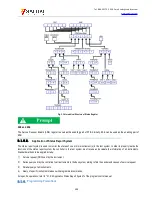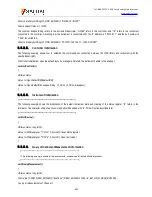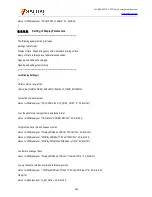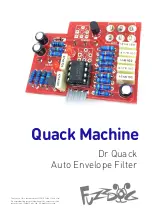
Tel: 886.2.2175 2930 Email: sales@salukitec.com
www.salukitec.com
250
A special type of command. For query of control equipment, return to the response message conforming to the controller grammar
requirements. Query string always end with a question mark.
2) Command type
The SCPI command is divided into two types: general command and special instrument command. Figure 5.2 shows the differences of
two types of commands. The general command is defined according to the IEEE488.2 standard, used for macro and status register
management, synchronization and data storage. It can be easily identified with the star mark in front of the command. For example,
*IDN
?
, *OPC and *RST are common commands. The general command is not the special instrument command and can be
explained in the same method, regardless of the current path setting.
The special instrument command is easy to identify with the colon (:). The colon is used at the beginning and between key words of the
command expression, such as:SENS<cnum>:FREQuency[:CW
?
]. Based on the internal functional modules of the instrument, special
instrument commands are divided into corresponding subsystem command subsets. For example, the power subsystem (:POWer)
includes relevant power commands, and the status subsystem (:STATus) includes the status control register commands.
Fig. 9.1 Types of SCPI Commands
3) Grammar of special instrument command
A typical command is made up of keywords prefixed with colons (:). The keywords are followed by parameters. The following is an
example syntax statement:
[:SOURce]:POWer[:LEVel]MAXimum|MINimum
In the above example, ":POWer" is followed by [:LEVel], with no space. "MINimum|MAXimum" behind [:LEVel] is the parameter part. A
space is used between the command and parameter. For the other parts of the grammar expression, see Table 9.2 and 9.3.
Table 9.2 Special Characters of Command Grammar
Symbol
Meaning
Examples
|
The vertical line between the keyword and parameter means a variety of
options.
TRIGger[:SEQuence]:SCOPe ALL|CURRent
"ALL" and "CURRent" are optional.
[]
The square brackets means that the included keywords or parameters are
optional in the command.
Even if the included keywords or parameters are ignored, the command will
be executed.
TRIGger[:SEQuence]:SCOPe ALL|CURRent
Where, SEQuence is optional.
<>
The part in the angle brackets must not be used according to the literal
meaning in the command. The angle brackets mean the necessary part.
TRIGger[:SEQuence]:SCOPe <char>
In this command, <char> must be replaced with the
actual trigger range string.
Example: ":TRIG:SCOPALL".
{}
The braces mean that the parameter is optional.
[:SOURce]:LIST:POWer<val>{,<val>}



















